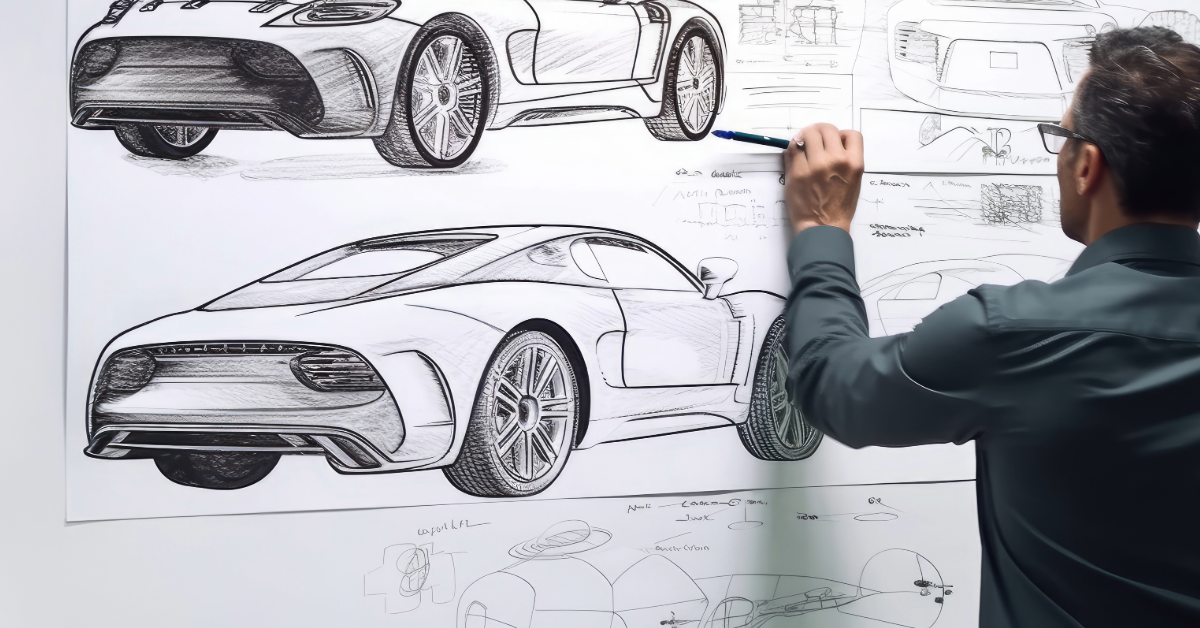
The Court of Justice of the European Union (CJEU) recently published its preliminary ruling in case C‑123/20 Ferrari. The German Federal Court of Justice (Bundesgerichtshof - BGH), hearing the appeal in the design infringement lawsuit of Ferrari v Mansory Design, a German company developing and selling tuning accessory for luxury cars, referred questions to the ECJ whether UCD protection for individual parts of a product arise as a result of disclosure of an overall image of a product.
In essence, the Court of Justice confirmed that an Unregistered Community Design can also be a partial design of a complex product disclosed to the public.
Background to the case
In the underlying German case, Italian car manufacturer Ferrari sued Mansory Design for infringement of its (Unregistered) Community Design rights in several parts of the Ferrari FXX K.

Excerpt from the Judgement of C-123/20
The Ferrari FXX K was first disclosed to the public by a press release on 2 December 2014 that included several images of the exterior of the car.
Mansory Design is a luxury car modification firm based in Brand, Germany, founded in 1989, and besides luxury cars, they also work on supercars, luxury SUVs, custom bikes and personal watercraft. Mansory Design designs and sells tuning kits like front lip spoilers integrated into the bumper. Relevant for the present case, they offers kits designed to alter the appearance of a Ferrari 488 GTB, including versions of the front kit reflecting the appearance of the Ferrari FXX K.
Before the Regional Court of Duesseldorf as first instance (LG Düsseldorf), Ferrari sought an injunction against Mansory Design prohibiting the making, offering, putting on the market, importing, exporting, using or stocking of the accessories in suit. The LG however dismissed those in their entirety.
Subsequently, Ferrari appealed the decision to the Higher Regional Court of Duesseldorf (OLG Düsseldorf) essentially maintaining only its claims for compensation since any further assumed rights had expired on 3 December 2017, together with any Unregistered Community Designs.
The courts of first and second instance essentially ruled that Ferrari had arbitrarily selected parts of the Ferrari FXX K, even though such rights did not exist on their own, as the claimed parts lacked "certain autonomy" and "certain consistency of form" to constitute a valid Community Design and held that the publication of a product only constituted protection for the product as a whole.
It was in those circumstances that the BGH, to which Ferrari subsequently appealed, decided to stay the proceedings and to refer the following questions to the Court of Justice for a preliminary ruling:
- Can unregistered Community designs in individual parts of a product arise as a result of disclosure of an overall image of a product in accordance with Article 11(1) and the first sentence of Article 11(2) of Regulation No 6/2002?
- If Question 1 is answered in the affirmative:
What legal criterion is to be applied for the purpose of assessing individual character in accordance with Article 4(2)(b) and Article 6(1) of Regulation [No 6/2002] when determining the overall impression of a component part which – as in the case of a part of a vehicle’s bodywork, for example – is to be incorporated into a complex product? In particular, can the criterion be whether the appearance of the component part, as viewed by an informed user, is not completely lost in the appearance of the complex product, but rather displays a certain autonomy and consistency of form such that it is possible to identify an aesthetic overall impression which is independent of the overall form?’
In essence, the BGH was asking “whether the making available to the public, within the meaning of Article 11(2) of Regulation No 6/2002, of the image of a product in its entirety also amounts to making available designs of parts of that product”.
The judgement of the ECJ
In the ruling, the Court of Justice laid out that once a product has been disclosed to the public, this amounts that the product as a whole was made available but also comprises the making available a design related to part of that product. Therefore, the disclosure of the complete product potentially also gives rise to individual rights of only parts of the product.
In order to establish such individual rights, the ECJ however held that certain requirements need to be met, mainly to ensure legal certainty for third parties. Firstly, the part of the product for which protection by a UCD is sought needs to be “clearly identifiable when the design is made available” to put the concerned circles into the position to acquire the knowledge on the design in question, or in other words to allow the identification of the design of the part or component of the product.
Secondly, where the making available consists in the publication of images of a product, the features of the part or component of that product for which protection is sought must be clearly visible, which “presupposes that the appearance of that part of the product or that component part of a complex product is capable, in itself, of producing an overall impression and cannot be completely lost in the product as a whole”.
Remarks
It is noteworthy that while Ferrari essentially had won the case, it could not stop Mansory Design from further offering and selling its design kits, as the unregistered community designs had already expired after its regular protection period of three years. This shows the importance to not only rely on Unregistered Community Designs, but preferably to decide from a commercial perspective, which products are a worthy target for individual long-term protection by a Registered Community Design. By the appropriate use of disclaimers, individual parts of a product can be protected on their own. This in turn avoids the need to rely on a possibly complicated and uncertain argumentation whether a UCD fulfils the above requirements of the ECJ to protection of individual parts.
Christoph is a Partner and Patent Attorney at Mewburn Ellis in our Munich office. Christoph leads our EU Design practice and is regularly involved in European and national design registration and design litigation matters. He advises clients on all aspects of IP strategy and portfolio management, including employee inventions in Germany, and also handles patent drafting and prosecution before the EPO and the German Patent and Trade Mark Office (DPMA), particularly in the fields of electrical engineering and ICT/CII.
Sign up to our newsletter: Forward - news, insights and features
Our people
Our IP specialists work at all stage of the IP life cycle and provide strategic advice about patent, trade mark and registered designs, as well as any IP-related disputes and legal and commercial requirements.
Our peopleContact Us
We have an easily-accessible office in central London, as well as a number of regional offices throughout the UK and an office in Munich, Germany. We’d love to hear from you, so please get in touch.
Get in touch

